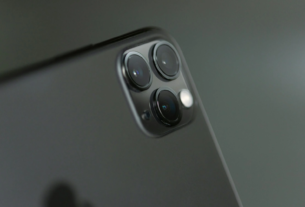A strong Google Business Profile (GBP) photo strategy can enhance your local visibility, attract customers, and build trust. However, not all images get approved—business owners often face rejection without understanding why.
Google enforces strict photo guidelines to maintain quality and authenticity on its platform. If your photos are getting rejected, it’s likely due to quality issues, policy violations, or inappropriate content.
Why Google Business Profile Photos Matter
Google Business Profile (formerly Google My Business) allows businesses to showcase their products, services, and atmosphere through visuals. Photos help potential customers decide whether to engage with your business.
The Impact of High-Quality GBP Photos:
- Improve Local SEO: Well-optimized images increase search rankings and make your profile more discoverable.
- Increase Click-Through Rates: Compelling visuals attract more users to your listing.
- Build Trust & Credibility: Authentic images help establish trust and set expectations.
A well-maintained photo gallery can significantly impact customer perception. Google even states that businesses with high-quality images receive 42% more requests for directions and 35% more website clicks than those without.
Why Is Google Rejecting My Photo?
Google reviews and filters all uploaded photos. If your image gets rejected, it likely violates one or more of their policies.
Common Reasons for Photo Rejection
1. Low-Quality or Blurry Images
Google rejects photos that lack clarity, are grainy, pixelated, or poorly lit.
How to Fix It:
- Use a high-resolution camera or smartphone with at least 12MP.
- Ensure good lighting—natural light works best.
- Avoid motion blur by using a steady hand or tripod.
2. Copyrighted or Watermarked Images
Google does not allow photos that violate copyright laws or contain visible watermarks or logos.
How to Fix It:
- Upload only original photos taken by you or your team.
- If using third-party images, ensure you have rights to use them (royalty-free or Creative Commons licensed).
- Avoid stock photos—Google prefers authentic business visuals.
3. Irrelevant or Misleading Photos
Google wants images that accurately represent your business, location, products, or services.
Examples of misleading content:
- A restaurant uploading stock food photos instead of real dishes.
- A hotel showing a misleading beach view that isn’t actually nearby.
- A service-based business posting unrelated product images.
How to Fix It:
- Ensure all photos are directly related to your business.
- Upload current, accurate, and authentic images.
4. Offensive, Inappropriate, or Prohibited Content
Google prohibits nudity, violence, hate speech, misleading claims, and anything deemed offensive.
How to Fix It:
- Avoid controversial, explicit, or sensitive images.
- Double-check Google’s community standards before uploading.
5. Text Overlays or Excessive Editing
Google discourages photos with excessive text, promotional overlays, or artificial enhancements.
How to Fix It:
- Keep images natural and realistic—avoid adding text, banners, or marketing slogans.
- If you need to display business hours or offers, use Google Posts instead.
6. Duplicate or Spammy Content
Google removes duplicate uploads or overly promotional images that don’t add value.
How to Fix It:
- Ensure each photo is unique and adds variety to your profile.
- Rotate seasonal images instead of uploading near-identical ones.
How to Ensure Your Photos Get Approved
Follow these best practices to maximize approval chances:
1. Use High-Quality, Well-Lit Photos
- Minimum 720 x 720 pixels resolution.
- Ensure sharp focus—no blur or pixelation.
- Use natural lighting for accurate colors.
2. Keep It Authentic and Relevant
- Only upload real images of your business, team, or services.
- No stock images—Google prefers real, on-site photography.
- Make sure photos match your location and offerings.
3. Avoid Watermarks, Text, or Overlays
- No added logos, text, or branding elements.
- Keep it clean and natural for a professional look.
4. Ensure Compliance with Google’s Policies
- Review Google’s content guidelines before uploading.
- Avoid banned content (offensive, misleading, or inappropriate).
- If rejected, check for copyright or policy violations.
What to Do If Your Photo Gets Rejected
If your photo is rejected, don’t panic. Follow these steps to troubleshoot and fix the issue:
1. Check the Rejection Email
Google typically sends an email stating the reason for rejection. Review it carefully to identify the issue.
2. Verify Google’s Photo Guidelines
Compare your rejected image with Google’s latest photo policies to see what rule it may have violated.
3. Reupload a Compliant Image
- If quality was the issue, upload a higher-resolution version.
- If the content was irrelevant, use a more appropriate photo.
- If there was a text overlay, remove unnecessary edits.
4. Appeal the Rejection (If Necessary)
If you believe your photo was wrongfully rejected, you can contact Google support and request a review.
Final Thoughts
A well-optimized Google Business Profile with high-quality, approved images can boost your search rankings and bring more customers to your business. Take the time to get it right, and your efforts will pay off.




